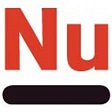DTRA renews contract to support Numerate’s predictive toxicity system
 Numerate, Inc., based in San Bruno, CA, announced that, in collaboration with CUBRC, a leading research, development, testing and system integration company, has received a three-year contract renewal worth $1.23 million from Defense Threat Reduction Agency (DTRA) within the Department of Defense (DoD).
Numerate, Inc., based in San Bruno, CA, announced that, in collaboration with CUBRC, a leading research, development, testing and system integration company, has received a three-year contract renewal worth $1.23 million from Defense Threat Reduction Agency (DTRA) within the Department of Defense (DoD).
Under the contract Numerate will be extending the capabilities of and, in collaboration with CUBRC, validating and deploying Numerate’s ToxTool system, developed and validated with CUBRC under two previous contracts with DTRA (under Prime Contracts FA8075-14-C-0092 and SP00700-00D-3180).
The ToxTool system is a computational assessment tool that can determine potential compound toxicity and guide the laboratory characterization of new chemical threat agents. At its core, ToxTool uses Numerate’s proprietary AI technology that has the capability to build highly predictive and generalizable ligand based models of compound-target activity, as well as absorption, distribution, metabolism, and elimination (ADME) properties with small amounts of publicly available data, which is often very noisy and biased. The current version of the tool contains over 6,600 mechanism-of-action based target models and around 1,600 surrogate models, used for protein targets without any publicly disclosed data. The tool also incorporates cellular pathway information, allowing researchers to quickly understand the implications of a predicted target hit, and ADME models, further helping the researchers understand whether a prediction is going to be clinically relevant.
Brandon Allgood, PhD, chief technology officer at Numerate, will lead the software development efforts and work closely with David Mangino, VP, chemical, biological & medical sciences at CUBRC, who will lead the laboratory validations of the tools predictions.
“We are excited to continue working with DTRA and CUBRC to further advance the capabilities of ToxTool,” said Dr. Brandon Allgood, CTO at Numerate. “These new developments will help to better inform and guide the researchers working to characterize new chemical threats and protect the warfighter. At the same time, these advancements will further improve our capabilities to develop new drugs that will have a much lower potential for off-target side effects in the clinic.”
During the first year of the renewal, the key advancement will be a more integrated ADME system using protein and RNA expression data to develop a protein map. Using this map and a number of newly developed ADME models, the tool will be able to qualify the clinical relevance of a target activity prediction. For example, if a compound is predicted to hit a CNS target, but the blood brain barrier model predicts that it won’t get into the CNS the threat level will be automatically downgraded. Previously, the system relied on the user’s understanding of biology for this determination. Other improvements also included in this year are user adjustable threat levels and incorporation of automatic pKa adjustment. In the following years, the tool will be equipped with the ability to incorporate new data in to existing models as researchers collect it, enabling them to add classified data to classified deployments. It will also include models of more routes of exposure.
“We are very pleased to continue our work with DTRA and our collaboration with Numerate supporting the development and testing of the ToxTool. In silico predictive assessments provide a critical contribution to the overall characterization of potential chemical threats and to the understanding of the clinical relevance of specific compounds,” said David Mangino, vice president of CUBRC’s Chemical, Biological & Medical Sciences Sector.
Source: Numerate








